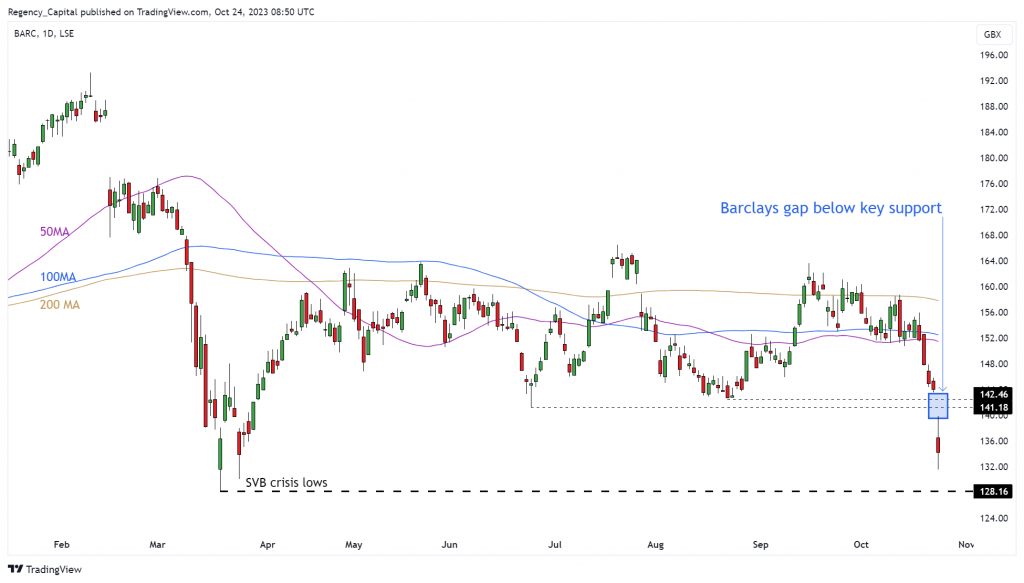Any material provided is for information purposes only and is not investment advice. Any opinions that may be provided are not a recommendation by G Assets LTD or its agents. We do not make any representations or warranty on the accuracy or completeness of the information that is provided. If you rely on the information on this page then you do so entirely on your own risk.
Financial Snapshot:
Barclays announced a 16% decrease in profit for the third quarter. This decline was primarily attributed to sluggish revenue growth in its UK retail division and lackluster performance in its investment bank, impacted by a shortage of M&A deals and reduced trading activity. However, Barclays managed to exceed expectations by achieving a net profit of £1.3 billion.
The bank also sustained a 5% increase in overall group revenue, reaching £6.3 billion, aligning with market projections. Notably, Barclays allocated fewer funds for bad loans than the market had predicted.
The UK retail division experienced a 3% dip in attributable profit, mainly due to customers shifting deposits away from higher-interest-rate products. Barclays anticipates a decrease in its net interest margin for 2023, now expected to fall within the range of 3.05% to 3.10%, down from the previous guidance of 3.2% to 3.15%. This metric is one to watch, especially with domestic peers like NatWest and Lloyds Banking Group preparing to report their quarterly results soon.
In the investment bank, income decreased by 6% to £3.1 billion when adjusted for a bond overissuance error from last year. Fixed-income trading saw a notable 26% decline, while equity trading revenue more than doubled. Advisory and capital markets fees dropped by 30% due to fewer takeover deals and reduced debt issuance.
Market Reaction:
The market has so far responded negatively to Barclays’ Q3 results, causing a share price to gap lower at the opening of today’s trading session.
Interestingly, this price gap breached two levels of horizontal support that were established by the summer swing lows. This negative gap is likely to create a layer of resistance on Barclays’ price chart in the future.
Prices now appear poised to retest the lows seen during the Silicon Valley banking crisis spike that occurred in March (see chart below).
BARC Daily Candle Chart

Past performance is not a reliable indicator of future results.
Risk Management:
The release of financial results tends to amplify a stock’s volatility. For those considering trading Barclays, the Average True Range (ATR) serves as a valuable tool to help traders account for a stock’s volatility when setting stop losses and limit orders.








